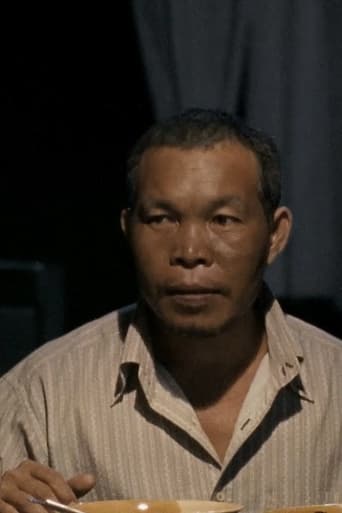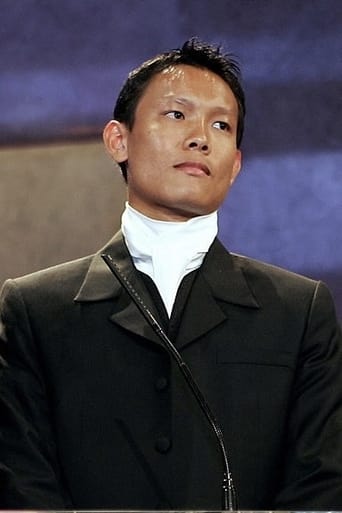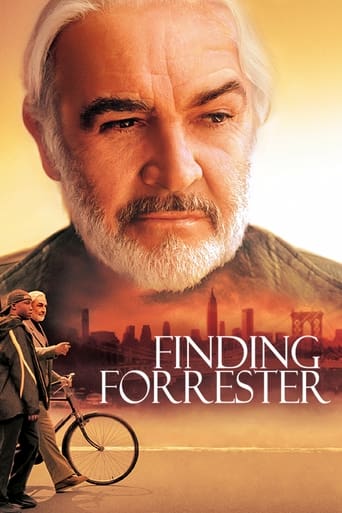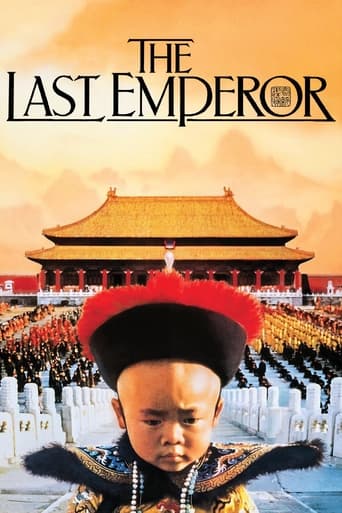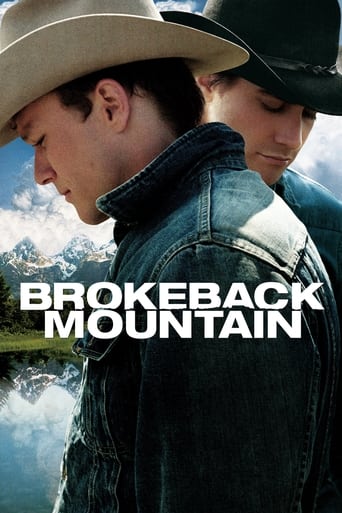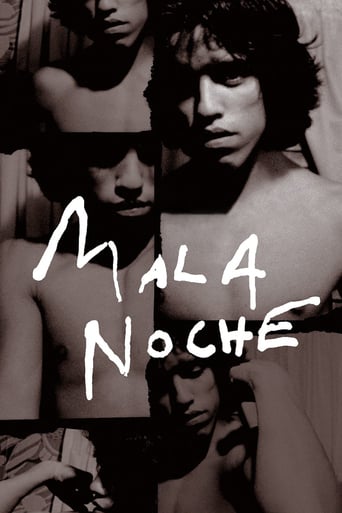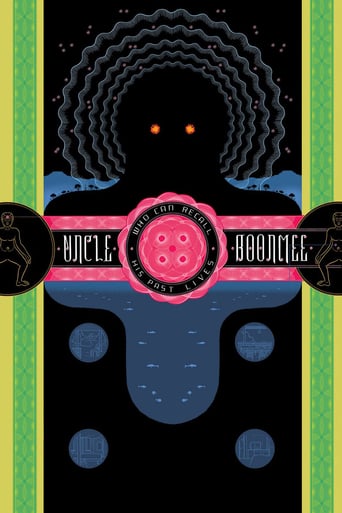
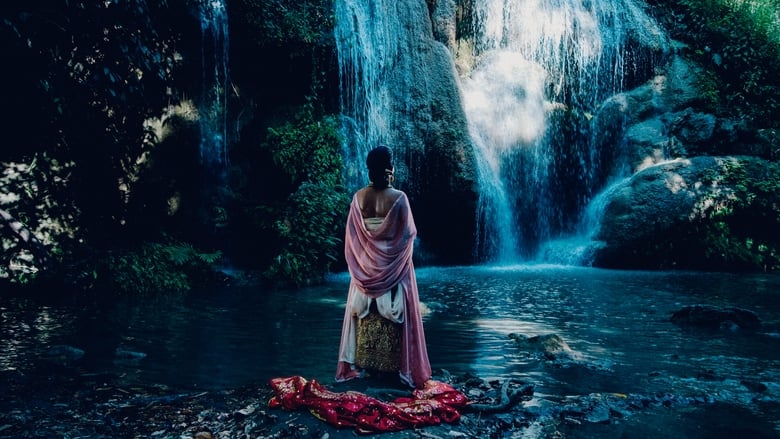
Uncle Boonmee Who Can Recall His Past Lives (2010)
Suffering from acute kidney failure, Boonmee has chosen to spend his final days surrounded by his loved ones in the countryside. Surprisingly, the ghost of his deceased wife appears to care for him, and his long lost son returns home in a non-human form. Contemplating the reasons for his illness, Boonmee treks through the jungle with his family to a mysterious hilltop cave—the birthplace of his first life.
Watch Trailer
Cast
Similar titles
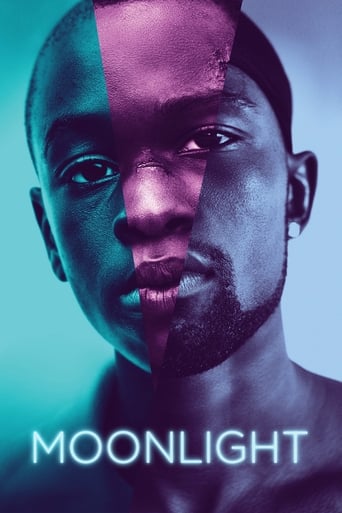
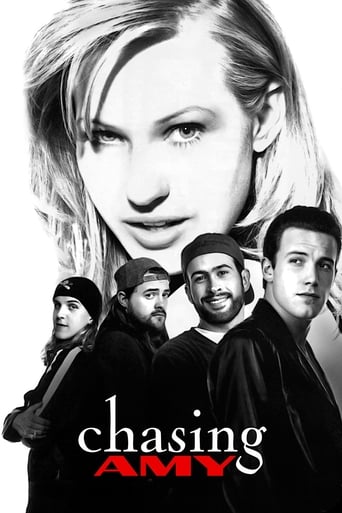
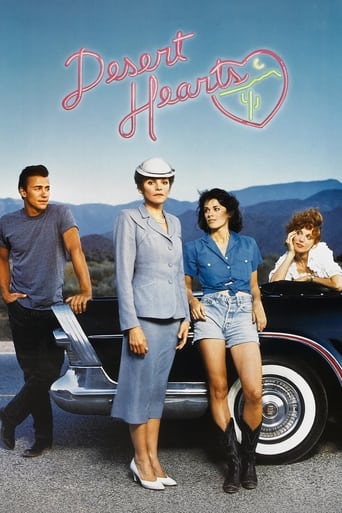


Reviews
A great movie, one of the best of this year. There was a bit of confusion at one point in the plot, but nothing serious.
While it doesn't offer any answers, it both thrills and makes you think.
It’s fine. It's literally the definition of a fine movie. You’ve seen it before, you know every beat and outcome before the characters even do. Only question is how much escapism you’re looking for.
One of the worst ways to make a cult movie is to set out to make a cult movie.
Uncle Boonmee Who Can Recall His Past Lives (2010) by Apichatpong Weerasethkul is an ambiguous movie that can be approximated by an act of meditation in Buddhist culture. It is important, however, to state that the Buddhist premises in the movie are secondary and should be interpreted only with the acknowledgment of its' binding with the primordial Thai culture. Boonmee gives a clear explanation that he can be considered an adherent of Buddhism, referring to such ideas as karma, but this is not the only aspects of Buddhist culture that Weerasethakul used in the story: temporality, time and realm of life are one of the main concepts that are traced in the movie, however, should not be taken as explicitly Buddhist. Temporality and time are one of the key features of the movie itself, and also in the dharma, the Buddhist teachings. The story is set in Thailand, in the country-side, and illustrates the conventional daily life on Boonmee, who seems to be a rather good living man with own property, suffering the kidney disease. The storytelling divides into various storylines, showing the contemporary current state of Boonmee and also his possible past lives. However, having no distinguished focalizer, it was left for the viewer to decide what is present, past and future according to the culture shown in the background. Due to the low real-life-like pace of the narration, it is even harder for the viewer to logically categorize, like the photographs shown closer to the end of the film are difficult to classify clearly. This feeling of things, action and even life itself being temporal and having rather a cyclical framing than linear is described in the Buddhist teachings as well as commented by Huay, the ghost wife Boonmee: "I have no concept of time anymore". Even the end of Boonmee's life is cyclical as well, returning to the cave, where his first life was created, emphasizing the cyclicality, but also the impermanence and, almost, insignificance. The characters themselves also represent several Buddhist teachings and concepts, like realms of life and rebirth, however, should be repeatedly put in the context of the cultural background of the story. Huay, according to bhavachakra, the wheel of life, represents the realm of ghosts, whose dominant emotion has always been considered greed. Even being a ghost she still feels attached (almost greedy) to Boonmee, commenting "Ghosts aren't attached to places but to people". Boonsong, the son of Huay and Boonmee, also does not ascribe himself to the human society. According to the wheel, transformed into the hairy big ape Boonsong would be a part of the animal realm, representing ignorance. Being ignorant, he wanted to get the knowledge about the mysterious creature on the photograph he showed during the dinner, became addicted to finding out what it was. This can be seen as an oblique reference to the different realm of life in Buddhism, showing that the suffering, samsara, in every domain is what rotates the wheel. Weerasethakul is a master of the cinematography, being able to immerse the viewer into the Thai country-side to act as a visual anthropologist, leaving everything unsaid, ambiguous and oblique. He uses the fundamental concepts of the Buddhist teachings to show the pieces of life in a whole picture, to comment of the cyclicity not only of one insignificant life but also the cyclicity of time itself, of feeling, emotions and even national history in some sense. Though he never gives the answer, for example, the split of Tong and Jaai in two parts in the end of the film is left to the subjectivity of each viewer. The impermanence and cyclical nature of the life by the director in a way, so that the viewer can feel it and live through it with the characters, trying to find answers and dharma in a way.
This film tells the story of a farm owner who lives in a rural village in Thailand. He has kidney problems and needs to have peritoneal dialysis, and he thinks his end is near. One day, his wife's ghost and a furry creature who claims to be his late son visit his home.I have wanted to watch "Uncle Boonmee Who Can Recall His Past Lives" for a long time because it is hailed to be great by film festivals. In just the first few minutes, I was already bored to death. It shows a cow wandering in the wild, and that lasted for minutes. It does not get any better from then on, nothing happens in the film. It is so slow in pace, and the still shots do not help. The story is so lacking that it could be told in ten minutes. The rest of the 100 minutes were fillers with no real substance. It is truly horrible, I wasted so much time on this film.
"You don't have to understand everything," explains Apitchatpong Weerasethakul about his Palm d'Or winning, enigmatic and ambiguous "Uncle Boonmee Who Can Recall His Past Lives" (2010) in a 2010 interview with The Guardian. This remark by the author of the film is very simple but even more relevant as such since it is, I believe, precisely the unconscious demand for clarity and unity, a rational need to understand which leads many spectators astray when it comes to Weerasethakul's cinema. The torment of understanding is what ruins the viewing experience for far too many, making it harder for them to see the simple beauty of films like "Uncle Boonmee".In all its simplicity, "Uncle Boonmee" is a story about a dying man. His family and other close ones take care of him as he requires daily doses of dialysis. On one night, his dead wife appears as a ghost to chat with him and his caretakers at a serene veranda only to be followed by the unexpected arrival of his long lost son who has now turned into an ape with glaring red eyes. A surprisingly calm discussion between those involved takes place, including a few flashback sequences, which slowly lead the way to a new day, a journey to a cave, and finally a detachment from this story to another. There are no spoilers here because they do not exist in the Weerasethakul canon. His films are less about stories and more about images. The gulf between those who love Weerasethakul and those who despise him begins in this division: one tries to find a coherent and consistent story in the images, explaining objects in the screen space as symbols for something much clearer and less vague, while the other tries to embrace the images themselves not as symbols but as what they are, images. One could think of it as cinematic music, a peculiar language of the rhythm which does not call for conceptual understanding but a pre-reflective reception. In addition to Weerasethakul's style, consisting of long takes, slow editing rhythm, large shot scales, lack of non-diegetic music, and a relentless use of ellipsis, which might create discontent in some spectators, there is also a more thematic, or "content-oriented," explanation for this discontent. "Uncle Boonmee" is about crossing boundaries. Halfway into the film, one is ready to accept a dialogue between people and ghosts as natural or a sexual encounter between a princess and a fish as nothing out of the ordinary. Conceptual distinctions into categories such as past and present, man and woman, animal and human, nature and culture, reason and emotion, dream and reality coalesce and disappear. This is why they will not serve a spectator trying to find a conceptually understandable story in the pervasiveness of the images. One could see the circularity of the narrative as a reflection of reincarnation, but even this seems too categorical. To me, there is only a fragmented narrative without clear boundaries unfolding like a beautiful poem without the burden of words. Hopefully this has not come off as an attack. The foregoing discussion has been nothing but a modest attempt to open streams of curiosity. I have tried to explain the division between those who admire and those who despise "Uncle Boonmee". I have located the latter's discontent in Weerasethakul's unique style (using slowness and serenity to create cinematic lyricism which challenges our conceptual understanding) and the film's thematic treatise on crossed boundaries (combining purported conceptual distinctions into one to create a non-linear narrative which challenges our conceptual understanding). Clearly this is not everything, but it is "everything" in less than one thousand words. To Weerasethakul, the discontent of some means nothing but the success of his cinema: "if I make a film that divides the audience, I feel like that's a certain level of success," Weerasethakul tells The Guardian. In the spirit of this remark, there is nothing left to say other than a request to give Weerasethakul's cinema a chance rather than condemning it on the basis of one's own purported categorical distinctions. Like in the films of Ozu or Bresson, the objects in the screen space are not symbolic; the images themselves are what count -- and it is those images where Weerasethakul's cinema returns to.
This film was difficult to watch. I realized part-way through that I am accustomed to being told by the soundtrack what to think and feel about a scene in a movie. For the most part, Uncle Boonmee gives you no such clues. Without them, I had to make up my own mind about how to respond to each scene. As a viewer, you are given natural background noise and an ensemble of fairytale characters - the monkey spirit, the catfish spirit, the princess, the club-footed woman, the monk and the ghost - and you are left to figure out the rest by yourself. There is plenty of scope to do so: the ordinary daytime scenes and the surreal nighttime events both proceed at a languid pace, and the characters respond to even the most disturbing developments with polite calm and gentle acceptance. It is fortunate that the mood is so relaxed and the progress of the film so sedate, as there is a lot of weirdness to process. Think Gozu, with all the violence, theatrics and narrative removed.
